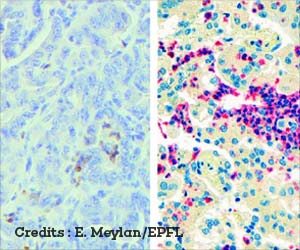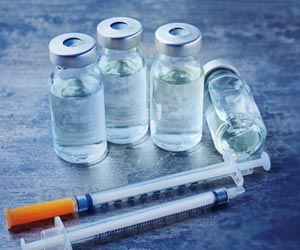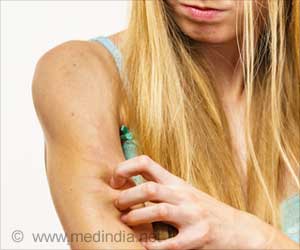The engineered CAR-T cells have mechano-sensors that can be remotely activated by ultrasound via microbubble amplification.
Highlights
- Remote-controlled mechanogenetics system can be used to engineer Chimeric Antigen Receptor (CAR)-expressing T cells.
- CAR T-cell therapy is a //type of immunotherapy where the T-cells (a type of white cells) of the immune system (body defense system against disease) are genetically modified to target and kill cancer cells.
CAR T-cell therapy
Chimeric antigen receptor (CAR) T-cell therapy is a type of immunotherapy where the T-cells (a type of white cells) of the immune system (body defense system against disease) are genetically modified in the laboratory. These engineered T-cells are capable of expressing certain receptors on their surface by means of which they are able to recognize specific proteins (antigens or targets) on tumor cells in order to destroy them.
CAR T-cell therapy is a form of adoptive cell transfer treatment since it enhances the activity of T-cells to target and attack cancer cells.
In this study, the research team shows how their remote-controlled mechanogenetics system can be used to engineer chimeric antigen receptor (CAR)-expressing T cells that can target and kill cancer cells. The engineered CAR-T cells have mechano-sensors and genetic transducing modules that can be remotely activated by ultrasound via microbubble amplification.
The research team found that microbubbles conjugated to streptavidin can be coupled to the surface of a cell, where mechanosensitive Piezo1 ion channels are expressed. Upon exposure to ultrasound waves, microbubbles vibrate and mechanically stimulate Piezo1 ion channels to let calcium ions inside the cell.
Reference
- Yijia Pan, Ziliang Huang, Molly Allen, Yiqian Wu, Ya-Ju Chang, Shu Chien and Yingxiao Wang, Sangpil Yoon, Changyang Lee, K. Kirk Shung, Jie Sun, Michel Sadelain. ‘Mechanogenetics for the remote and non-invasive control of cancer immunotherapy.’Proceedings of the National Academy of Sciences (2017). http://dx.doi.org/10.1073/pnas.1714900115.
Source-Medindia
















